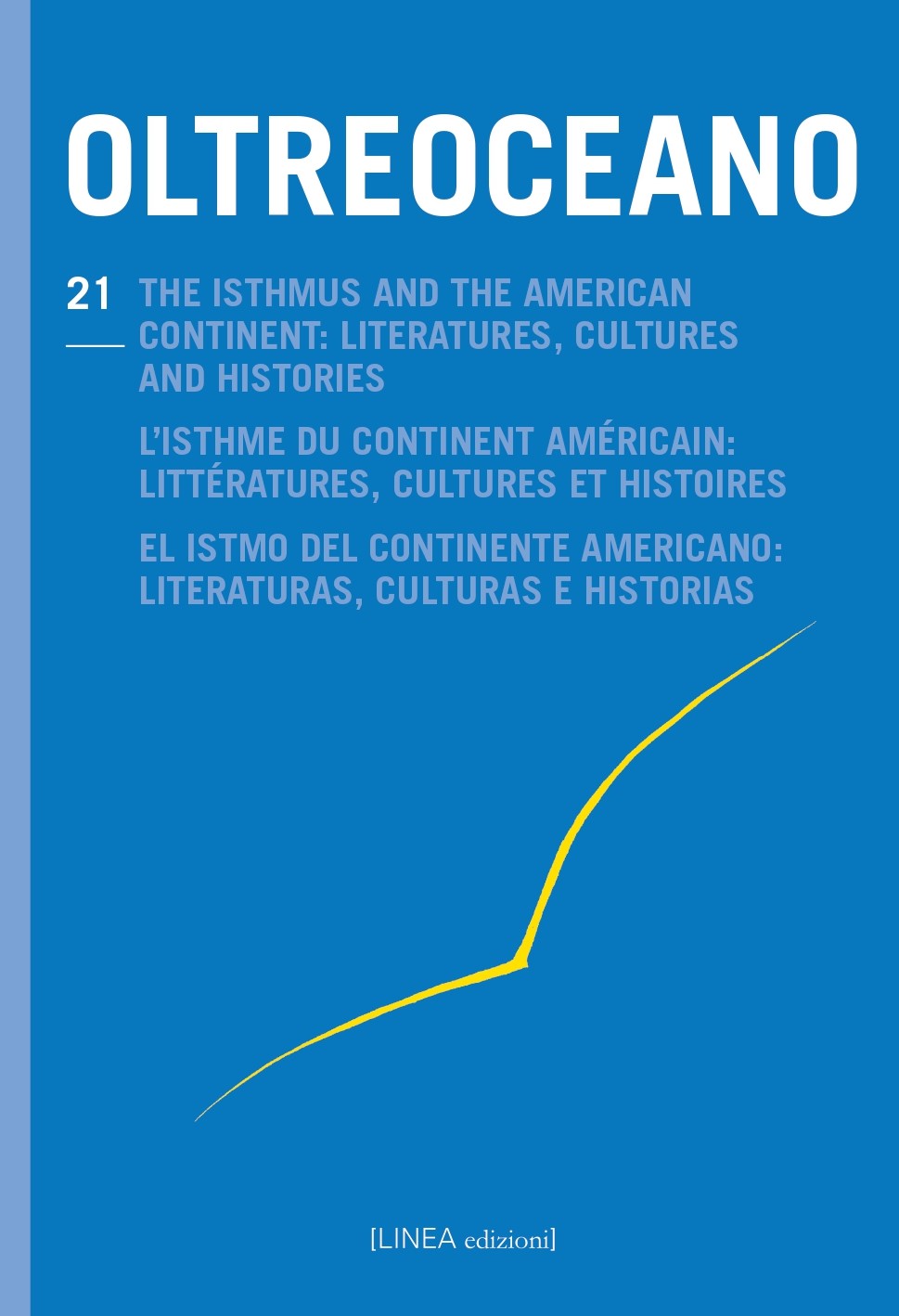Looks, exile and identity as metafictions in images. Miguel Barahona’s collective narrative
DOI:
https://doi.org/10.53154/Oltreoceano73Keywords:
exile, identity, artistic languageAbstract
This paper proposes to analyze the discourse of the image and the words in relation to identity, then this type of artistic language is investigated from a theoretical perspective. Through a questioning, the abstract space of photographic contemplation is approached, but linking it to the ideas transmitted by the work piece. The argument that will serve as a pivot point in the decoding will be the questioning of the contradictions that are denoted in terms of migration and exile present in the work Pérdida temporal de la memoria by the Honduran artist Miguel Barahona, presented at the V Biennial of the Visual Arts of the Central American Isthmus. Methodologically, it is considered a documentary analysis based on the proposal of Roland Barthes, Adolfo Sánchez Vázquez and Eva Heller, who proposed the decode of the image from the internal spacing compressed in space-time. Therefore, the way to transmit the ideas proposed by the artist will be through an analysis of the decoding perspective and identity marks, relating it to those indications that Sánchez Vázquez, at the time, called as «a specific language or peculiar system of signs». The entire approach of the writing is made visible through the aesthetics of the image and the semantic load applied to what is designated as «the postulate of the identity of thought and language».
Downloads
References
Aumont, J. (1990): La imagen. Barcelona: Paidós Comunicación.
Barthes, R. (1986): Lo obvio y lo obtuso. Imágenes, gestos y voces. Barcelona: Paídós.
Barahona, M. (2022, 18 de febrero): Entrevista personal.
Barahona, M. (2006, julio): La permeabilidad de la mirada: Reivindicando la fotografía como el filtro de la realidad [discurso del artista]. Honduras, Tegucigalpa: Bienal de Artes Visuales de Honduras.
Barahona, M. (2006): Pérdida Temporal de la Memoria. Fotografía 156 x 206 cm. En Museo de Arte de El Salvador, Catálogo. V Bienal de artes Visuales del Istmo Centroamericano (pp. 1-130). San Salvador: El Salvador.
Blandino, B. (2006): Bienal de Artes Visuales de Honduras: Una visión de múltiples manifestaciones. En M. D. Salvador, V Bienal de Artes Visuales del Istmo Centroamericano (p. 47). El Salvador: Museo de Arte MARTE.
de Melo, F. M. (1660): Epanaphoras de varia historia portuguesa: a El Rey Nosso Senhor D. Afonso VI : em cinco relaçoens de sucessos pertencentes a este Reyno: que contem negocios publicos, politicos, tragicos, amorosos, belicos, triunfantes. H. V. Oliueira (Ed). Lisboa, Portugal: Na Officina de Henrique Valiente de Oliueira Impressor. Recuperado de https://purl.pt/771 (Consultado el 23/03/2022).
Groupe μ. (1993): Tratado del signo visual. Madrid: Cátedra.
Heller, E. (2008): Psicología del color. Cómo actúan los colores sobre los sentimientos y la razón. Barcelona: Gustavo Gili.
Huertas, F. (2001): Punto de vista. Una reflexión fenomelógica. Universo Fotográfico Revista de Fotografía, III, 3, pp. 52-76.
Museo de Arte de El Salvador (2006): Catálogo. V Bienal de artes Visuales del Istmo Centroamericano. San Salvador: El Salvador.
Real Academia Española y Asociación de Academias de la Lengua Española (2019): Glosario de Términos Gramaticales. Salamanca: Universidad de Salamanca.
Ribeaux, A.; Blandino, B. & Herrera Ubico, S. (2003): Catálogo de las Antología de las Artes Plásticas de Honduras “Carlos Zúñiga Figueroa”. Tegucigalpa: Agencia Española de Cooperación Internacional.
Sánchez Vásquez, A. (2013): Cuestiones estéticas y artísticas contemporanéas. México: Fondo de Cultura Ecónomica.
Garrido Gallardo, M (1988): Teoría de los Géneros Literarios. España: Arco Libros.
Van Dijk, T. (1994): Discurso, poder y cognición social. Conferencias. Cuadernos de la Maestría en Lingüística. Escuela de Ciencias del Lenguaje y Literaturas, pp. 1-92.
Downloads
Published
How to Cite
Issue
Section
License

This work is licensed under a Creative Commons Attribution-NonCommercial-ShareAlike 4.0 International License.
The authors undertake to comply with the following conditions, which are considered accepted at the time of submission of their contributions.
The sending of a text implies that it is unpublished and not submitted to be published elsewhere.
1. If accepted, the author shall confer on the publisher the right to publish and distribute it both in paper form and in the online electronic edition. The published articles will be downloadable and made available in open access.
2. Provided that it correctly indicates that the first publication took place in the journal Oltreoceano. Rivista sulle migrazioni the author has the right to: a) reproduce the article in separate extracts or collected in a volume; b) publish the article on their personal website or teaching site provided that these sites are of a non-commercial nature; c) deposit the article in online archives of a non-commercial nature, linked to the institution they belong to or as part of projects for the non-commercial dissemination and open access of scientific works.
The use of contributions by third parties, for commercial or otherwise unauthorized purposes, is not allowed. The publisher declines all responsibility for the unauthorized use of the material published in the journal.












